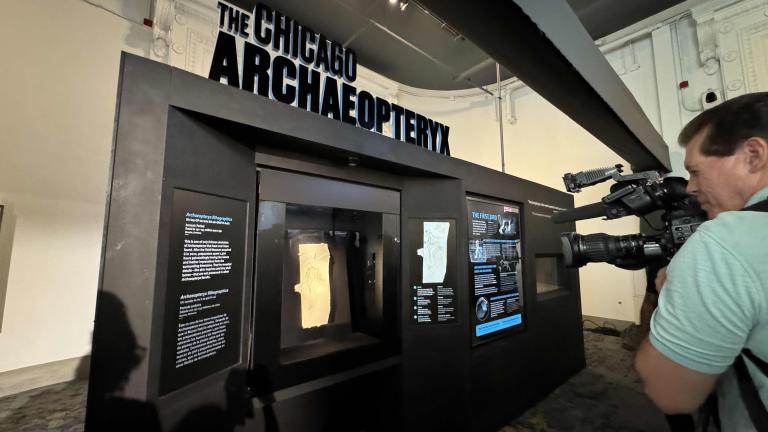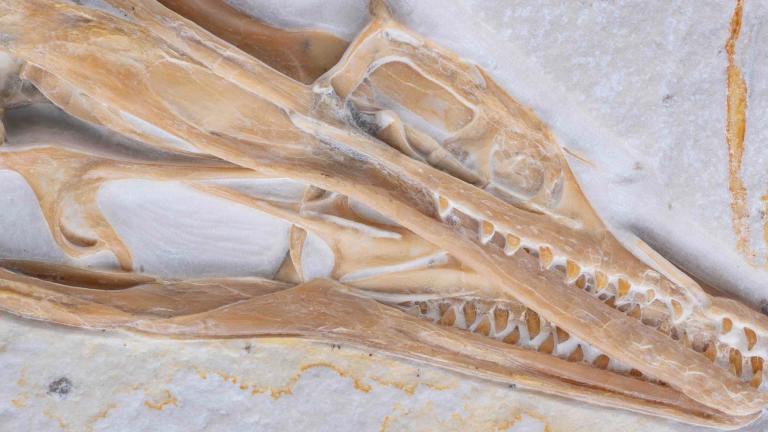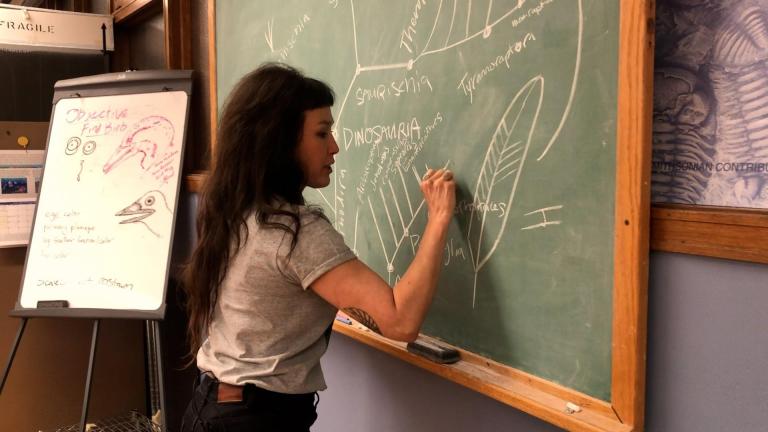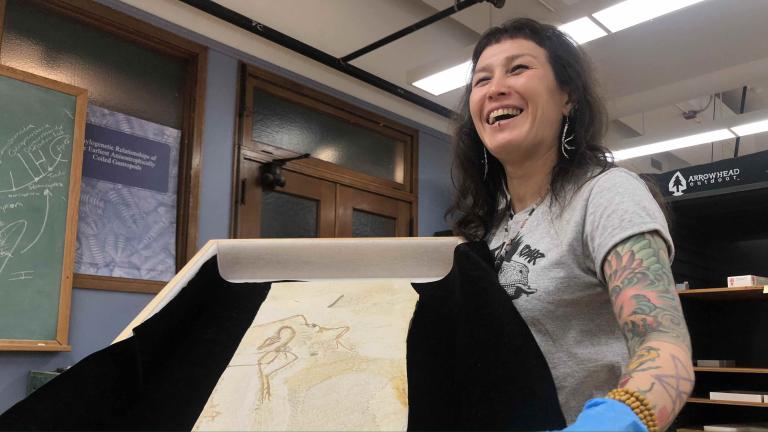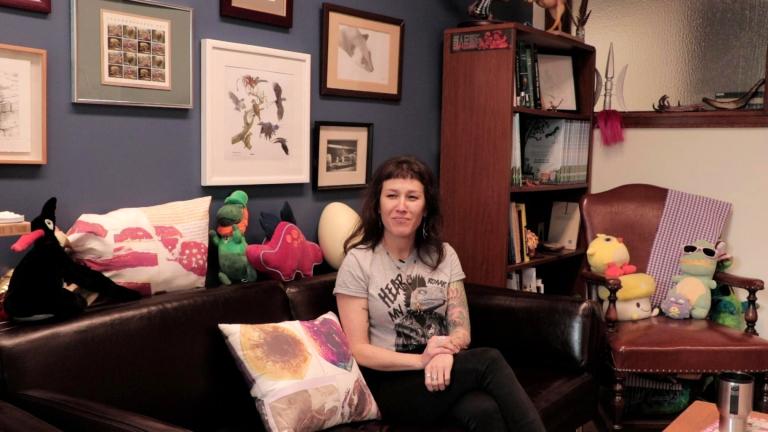Video: Produced by Nicole Cardos
Only 13 specimens of Archaeopteryx — and one special feather — are known to exist since the first Archaeopteryx fossils were discovered in 1860.
Almost all come from the same deposit of Solnhofen Limestone in Bavaria, Germany — rock that began to form when the region was covered by a shallow prehistoric sea.
Most of the specimens are housed in German institutions, some are in the hands of private collectors, and one has gone missing.
Thanks to our sponsors:
The Chicago Archaeopteryx at the Field Museum of Natural History is the only specimen owned by a public natural history museum in the Western Hemisphere.
-
“The feather” was discovered in 1860/61. It consists of two counter slabs, housed at separate institutions.
- Locations:
-
London specimen
- Data point: First skeleton identified
- Condition: Missing most of its head and neck
- Location: Natural History Museum in London (England)
-
Berlin specimen
- Condition: Considered the GOAT of Archaeopteryx specimens, in terms of completeness and beauty
- Location: Museum für Naturkunde in Berlin (Germany)
-
Maxberg specimen
- Data point: Missing since 1991
- Condition: Specimen is a torso; no head or tail
- Location: Unknown. The Maxberg specimen was once exhibited at the Maxberg Museum in Solnhofen (Germany), which has since moved and been renamed.
-
Haarlem specimen
- Data point: This was actually the first specimen found, but because it was misidentified the London specimen was the first announced.
- Condition: One of the least complete specimens — mostly limb bones and isolated cervical vertebrae and ribs
- Location: Teylers Museum in Haarlem (Netherlands)
-
Eichstätt specimen
- Data point: Smallest specimen
- Condition: Excellently preserved skull
- Location: Jura Museum in Eichstätt (Germany)
-
Solnhofen specimen
- Data point: Largest specimen
- Condition: Missing portions of the neck, tail, backbone and head
- Location: Bürgermeister-Müller-Museum in Solnhofen (Germany)
-
Munich specimen
- Data point: Displayed at the Field Museum in 1997 as part of a special exhibit
- Condition: Nearly complete, with excellently preserved hind limbs, including a tightly flexed claw
- Location: Paläontologisches Museum München (Germany)
-
Daiting specimen
- Data point: Not discovered in Solnhofen limestone, but in younger sediments
- Condition: Fragments, including a skull
- Location: Museum of Evolution at Knuthenborg Safaripark (Denmark)
-
Bürgermeister-Müller specimen
- Data point: Nicknamed “chicken wing”
- Condition: Fragment of a single wing. See: nickname
- Location: On loan to the Bürgermeister-Müller Museum in Solnhofen (Germany)
-
Thermopolis specimen
- Data point: First specimen housed outside Europe
- Condition: Some bones preserved in three dimensions; considered second only to Berlin for beauty
- Location: On long-term loan at the Wyoming Dinosaur Center (Thermopolis, Wyoming)
-
11th specimen
- Data point: Privately owned and not given a name
- Condition: Missing the skull and one forelimb
- Location: On loan to the Senckenberg Naturmuseum Frankfurt (Germany)
-
12th specimen
- Data point: Privately owned, announced in 2014, not given a name
- Condition: Largely intact skeleton with dislocated skull
- Location: Dinosaurier Museum Altmühltal in Denkendorf (Germany)
-
Chicago specimen
- Data point: Announced May 2024
- Condition: One of the most complete specimens, with beautifully preserved skull and vertebrae
- Location: Field Museum of Natural History (Chicago, Illinois)
Read More:
- The Field Museum Now Has an Incredibly Rare Fossil Proving Birds Are Dinosaurs. Here’s a Behind-the-Scenes Look at How They Got It
- Birds Are Dinosaurs: How a Family Tree That Spans T. Rex to Pigeons Informs Our Understanding of Life on Earth
- Meet Jingmai O’Connor, the Punk Rock Paleontologist Who Leads the Field Museum’s Archaeopteryx Team
Photo Credits:
- “The feather”: Archaeopteryx The Urvogel Feather; Notafly, CC BY-SA 3.0, via Wikimedia Commons
- London specimen: Florian Pircher/Pixabay
- Berlin specimen: Emily Willoughby, CC BY-SA 4.0, via Wikimedia Commons
- Maxberg specimen: H. Raab (User:Vesta), CC BY-SA 3.0, via Wikimedia Commons
- Haarlem specimen: MWAK, Public domain, via Wikimedia Commons (Note: This specimen is in two pieces/two photos, both with same credit.)
- Eichstätt specimen: Ryan Somma, CC BY-SA 2.0, via Wikimedia Commons
- Solnhofen specimen: Michael Clark, CC BY 2.0, via Wikimedia Commons
- Munich specimen: ESRF/Pascal Goetgheluck
- Daiting specimen: H. Raab (User:Vesta), CC BY-SA 3.0, via Wikimedia Commons
- Bürgermeister-Müller specimen: H. Raab (User:Vesta), CC BY-SA 3.0, via Wikimedia Commons
- Thermopolis specimen: Wyoming Dinosaur Center
- 11th specimen: Allie Caulfield, CC BY 2.0 Deed, Flickr Creative Commons
- 12th specimen: Crosa, CC BY 2.0 Deed, Flickr Creative Commons
- Chicago specimen: Nicole Cardos / WTTW News

